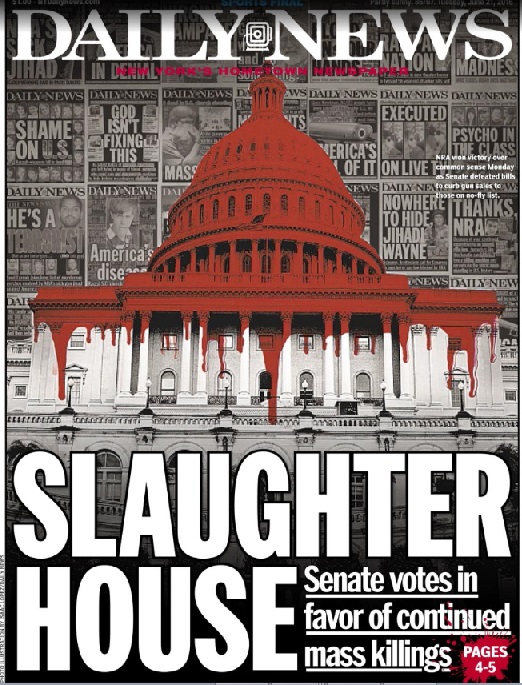Dear Commons Community,
As the world recovers from the vote in the U.K. to withdraw from the European Union (NYSE dropped 600 points yesterday), pundits were speculating whether it bodes well for a Donald Trump presidency here in the U.S.A. An article in the New York Times today questions this possibility. Below is an excerpt:
“Driving the “Brexit” vote were many of the same impulses that have animated American politics in this turbulent election year: anger at distant elites, anxiety about a perceived loss of national sovereignty and, perhaps most of all, resentment toward migrants and refugees.
These are the themes that Donald J. Trump harnessed during the Republican presidential primaries to explosive effect, and that he aims to wield to his advantage again in his race against Hillary Clinton. Mr. Trump endorsed Britain’s abandonment of the European Union and hailed the vote during a stop in Scotland on Friday.
Veteran Republican and Democratic strategists say that Mr. Trump, and to a lesser extent, Senator Bernie Sanders in the Democratic contest, represent an American echo of the inward-looking politics that have swept across Europe in recent years.
“There’s a fundamental issue that all developed economies have to confront, which is that globalization and technological changes have meant millions of people have seen their jobs marginalized and wages decline,” said David Axelrod, a former strategist for President Obama and an adviser to Britain’s Labour Party in last year’s general election.
“And so lots of folks want to turn the clock back and make America, or their country, great again.”
Although Mr. Trump may struggle to convert a message of national retrenchment into victory here, some of the stark divisions on display in Britain do mirror political trends in this country.
The highly educated, younger voters around London who voted to remain in the European Union, for example, share some commonalities with the American urbanites who were the pillars of Mr. Obama’s coalition. And Mr. Trump has triumphed with the American counterparts of the British “Leave” voters: older whites who lack university degrees and live in less prosperous regions of the English countryside.
But beneath those generalities, there are crucial distinctions between the Brexit vote and the 2016 presidential election.
In the United States, there is no recent history of electing nationalist presidents hostile to immigration, and even recent Republican presidents have celebrated new arrivals as integral to American prosperity and identity.
American presidential elections are largely decided by a diverse and upscale electorate, anchored in America’s cities and suburbs. These communities more closely resemble London than Lincolnshire. Minorities made up more than a quarter of the electorate in the last presidential campaign.
And while Britain decided to leave the European Union through a popular vote, the White House race will be determined by the Electoral College, which is tilted toward the Democrats. Some large states with significant nonwhite populations have been out of reach for Republican candidates for much of the last three decades; California, New York, New Jersey, Illinois and Pennsylvania have voted for every Democratic nominee since 1992. Mr. Obama also won Florida twice, and Mrs. Clinton has a lead there now in part because Mr. Trump is unpopular with Hispanics.
Together those six states offer 166 of the 270 electoral votes needed to win the presidency.
Mr. Trump is at an even greater disadvantage than other recent Republican presidential nominees because of his dismal standing with nonwhite, college-educated and female voters. Unless he can reverse the deeply negative views such voters have of him, he is unlikely to capture the voter-rich communities around Philadelphia, Denver, Miami and Washington that are crucial to winning the White House.
Joe Trippi, a Democratic political strategist who was a consultant for former Prime Minister Tony Blair of Britain, said he expected the Brexit vote to embolden American conservatives. But their excitement, Mr. Trippi said, would be largely “a false read” of the results.
“There are some very similar things — a polarized electorate, nativism, nationalism were clearly big factors, and Trump exemplifies them here,” Mr. Trippi said.
“But there is a difference in the multiculturalism and diversity of the United States, versus nowhere near the same factors in the U.K.”
Despite high levels of concern about immigration and foreign trade, polls show that most Americans have so far recoiled from Mr. Trump’s specific policy proposals, such as deporting 11 million undocumented immigrants.
A survey published by the Public Religion Research Institute and the Brookings Institution on Thursday found that while Americans were closely split on the benefits of immigration and mostly said global trade was harmful, strong majorities rejected Mr. Trump’s promises to build a wall on the Mexican border and ban Muslim immigration.
Further, the vote in Britain was a referendum on a European entity that was easy to rally against, while the presidential vote here is increasingly becoming a referendum on a polarizing individual.
“Americans will be asked to vote for or against a person: Trump,” said Tony Fratto, a former press secretary for George W. Bush.
“And that’s a higher hurdle. If you want to express yourself with a protest vote, you’ll have to vote for Trump, and he is singularly unattractive and even offensive to a large majority of Americans.”
If the moment seemed to invite a triumphant, thematic victory speech by Mr. Trump on Friday, the candidate himself had other ideas.
Appearing at a golf resort he owns in Turnberry, Scotland, Mr. Trump applauded the vote as an expression of national anger. But in the course of a meandering news conference, Mr. Trump dwelled on the virtues of his property there, and compared the difficulties of the American presidency to the task of refurbishing a golf course.
Mr. Trump was dismissive of the economic ramifications of the referendum, and predicted that a downturn for the British pound would benefit his business. “When the pound goes down, more people are coming to Turnberry, frankly,” Mr. Trump said.
Mrs. Clinton responded with restraint, issuing a statement offering “respect” for the decision made by a close ally and offering assurances about “America’s steadfast commitment to the special relationship with Britain.”
The two key elements of the analysis above are that America is far-more diverse and multicultural than the U.K. and that voters in Britain were voting for or against the European Union which is far different than voting for a person. While both Donald Trump and Hillary Clinton have “person” hurdles to jump, Donald has a far higher one.
Tony





